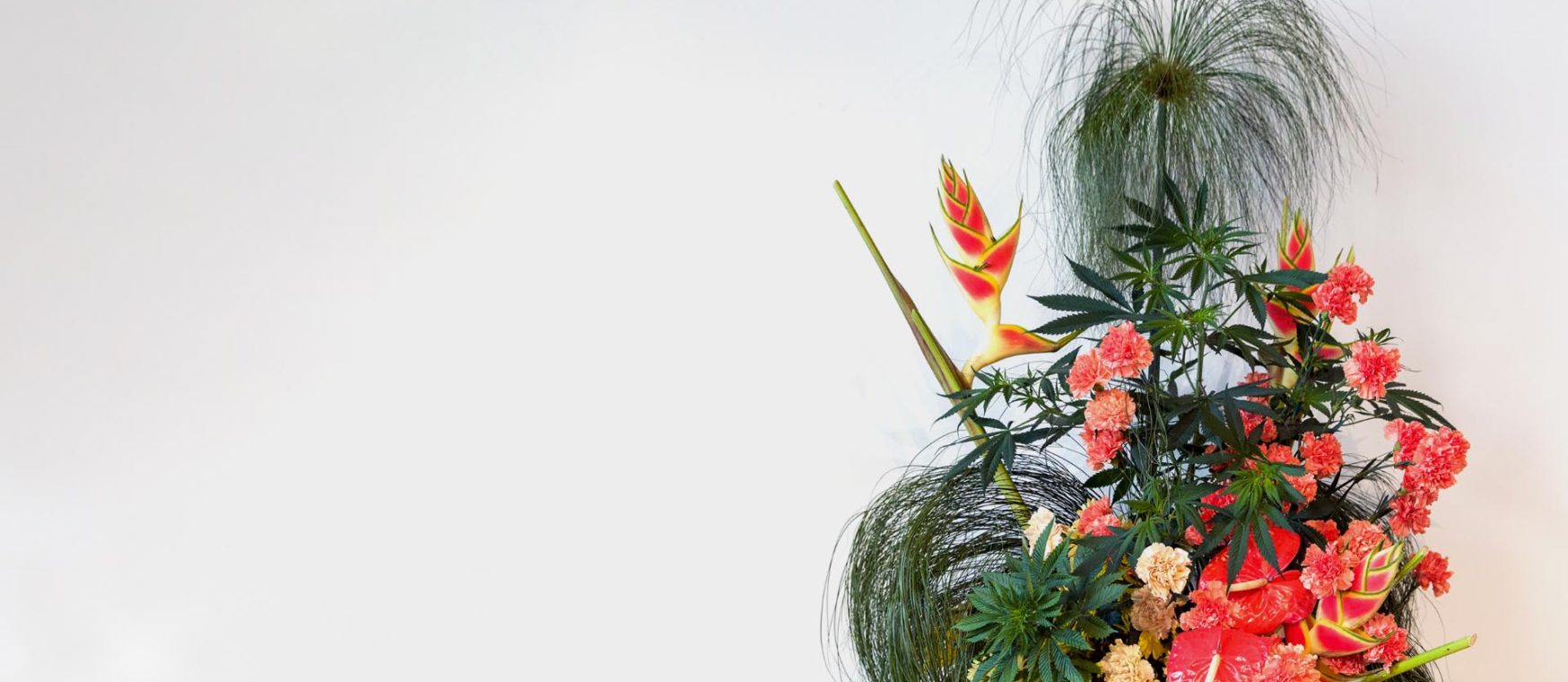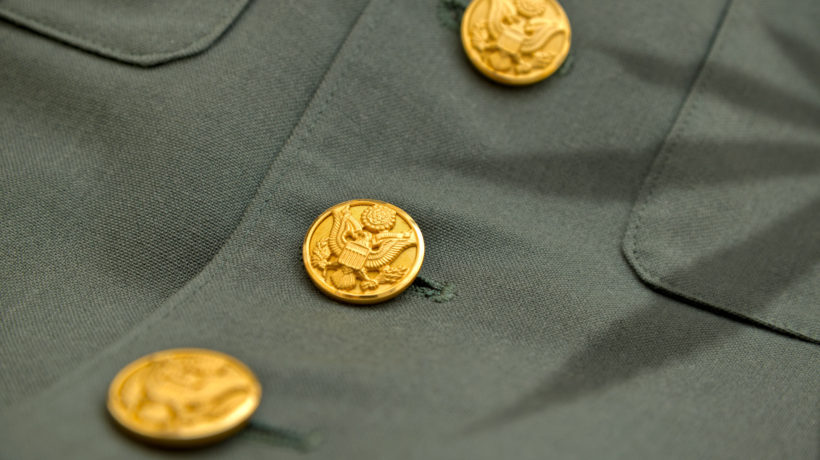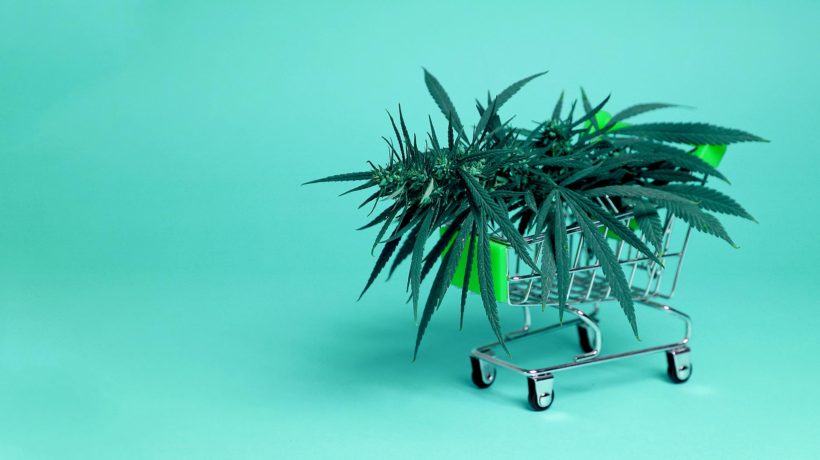At the front of the library at MOMA PS1, a flower installation stood in the style of Ikebana, an umbrella term for the Japanese art of flower arrangement. Amid exotic tropical flowers, branches, and recognizable produce, cannabis leaves were nestled into each arrangement. The new installation was the centerpiece of a panel discussion entitled “Hothouse: Flowers and Cannabis Culture with Broccoli Magazine.” The audience gathered to listen to the panelists speak on the role of cannabis in art, focusing less on its effects and more on its beauty and potential as a vessel for artistic expression.
The panel, attended by Anja Charbonneau, Editor-in-Chief of Broccoli Magazine, Amy Merrick, floral arranger and creator of the installation; Alice Grandoit, cannabis advocate and student of floral arrangement; and Mennlay Golokeh Aggrey, Mexico City-based cannabis grower, focused on the plant’s inherent beauty and potential for fostering community engagement.
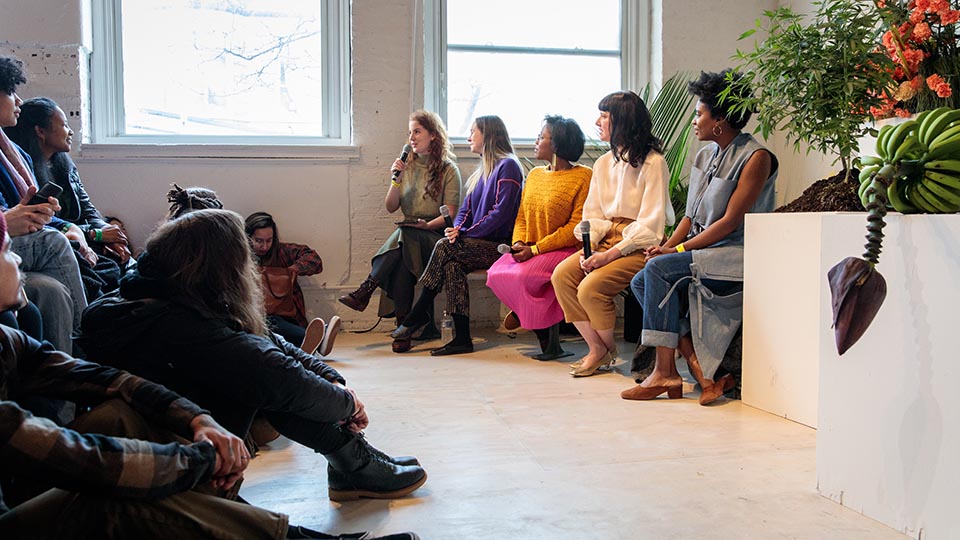
Image courtesy MoMA PS1. Photo by Walter Wlodarczyk.
Moderated by Georgia Frances King, the panelists discussed the stigma of the “pot leaf” in mainstream discourse, with its connotations as an emblem of “stoner culture.” The installation mirrored a similar one by Merrick for a cover of Broccoli Magazine. Charbonneau described the cover choice as an effort to destigmatize the image of the pot leaf, reframing it as a beautiful plant similar to any other and worthy of inclusion and consideration within the Ikebana practice.
“an effort to destigmatize the image of the pot leaf, reframing it as a beautiful plant similar to any other”
In Ikebana, Merrick explained, each stem in any given arrangement has a distinct significance, and the resulting arrangement represents a cohesive message. By utilizing the emblematic pot leaf, the artist complicated its mainstream symbolism as part of the counterculture, highlighting its simple elegance instead. The panel focused on cannabis as more than an intoxicant or a subject of political debate; rather, it is a plant that requires love and nurturing similar to any other in order to grow, and an object of beauty and a subject of artistic exploration. She explained that flowers foster a collective community experience, and utilizing the pot leaf in this way can reframe it outside mainstream political discourse.
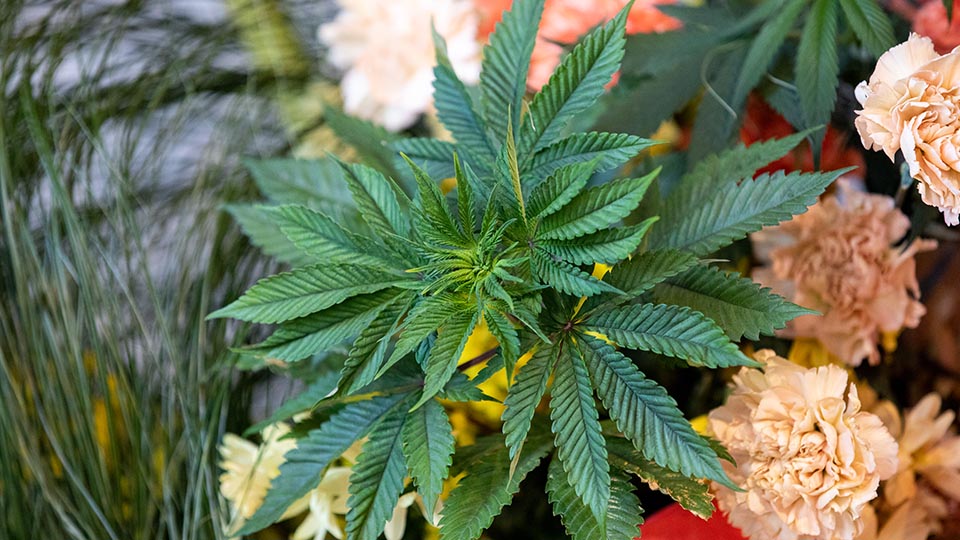
Image courtesy MoMA PS1. Photo by Walter Wlodarczyk.
The introduction of cannabis to New York’s fine art sphere was welcome, evidenced by the crowded space (on Superbowl Sunday, no less). The room was overflowing, and audience members squeezed in to find seats on the floor or wedge themselves into the standing room. Though the anecdotal evidence shows that New Yorkers are ready for cannabis in the mainstream, the question remains how to integrate marginalized and criminalized communities into these discussions.
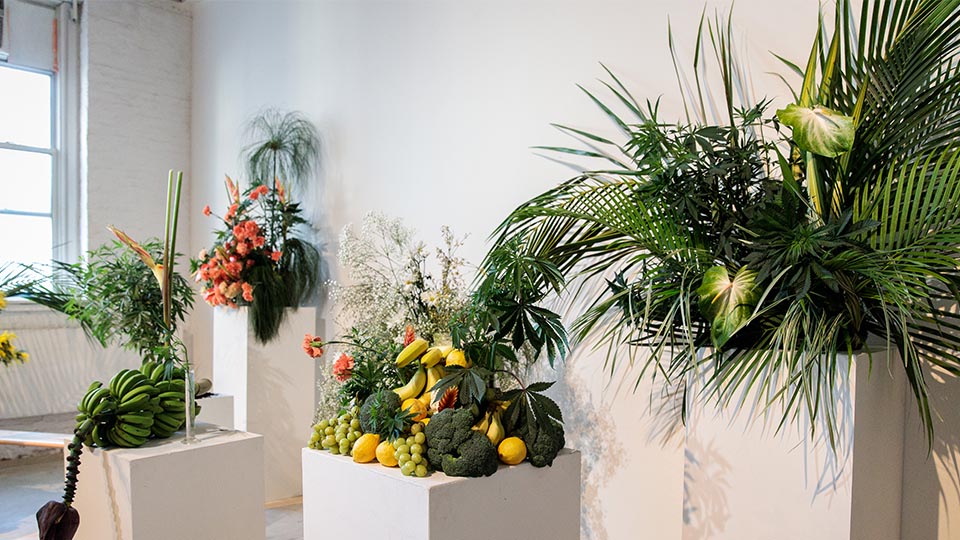
Image courtesy MoMA PS1. Photo by Walter Wlodarczyk.
Charbonneau voiced her thoughts that the cannabis industry suffers from similar blind spots as any other large capitalist industry, and it is up to the consumer to demand ethical business practices from companies in their early stages, especially as it enters new markets. The panelists acknowledged the necessity of diversification within the cannabis industry. Though the thesis of the project is to normalize the plant by presenting it within traditional artistic frameworks, there remains an access gap for New Yorkers. I was left wondering how to open the dialogue and facilitate diversification by presenting work outside of a high-art, exclusive and ticketed space.
